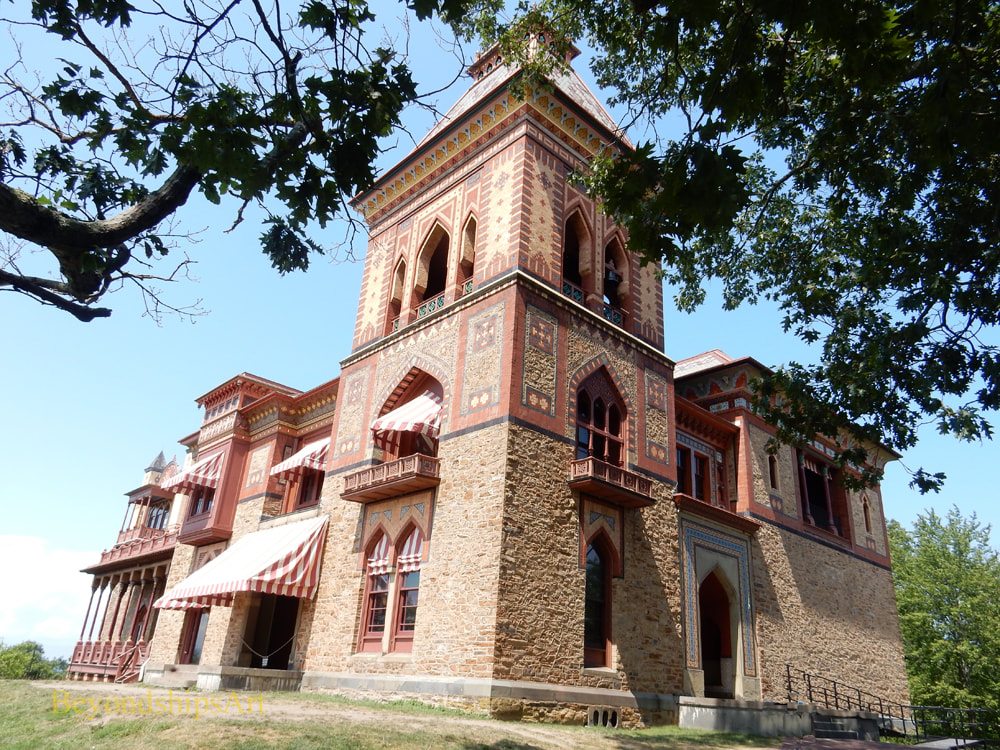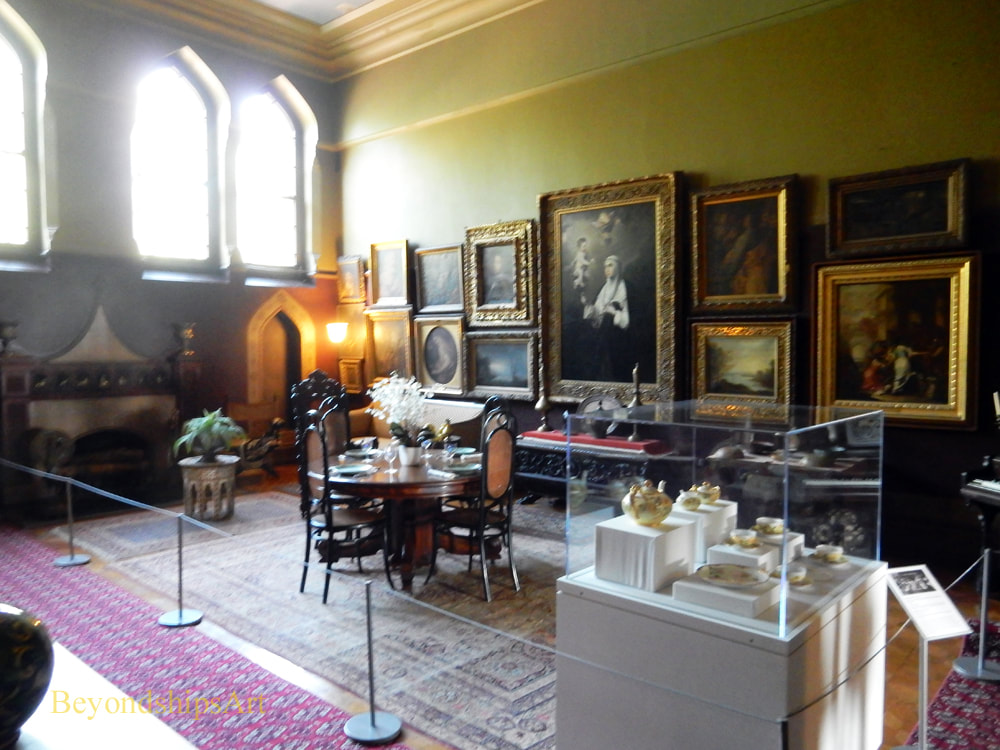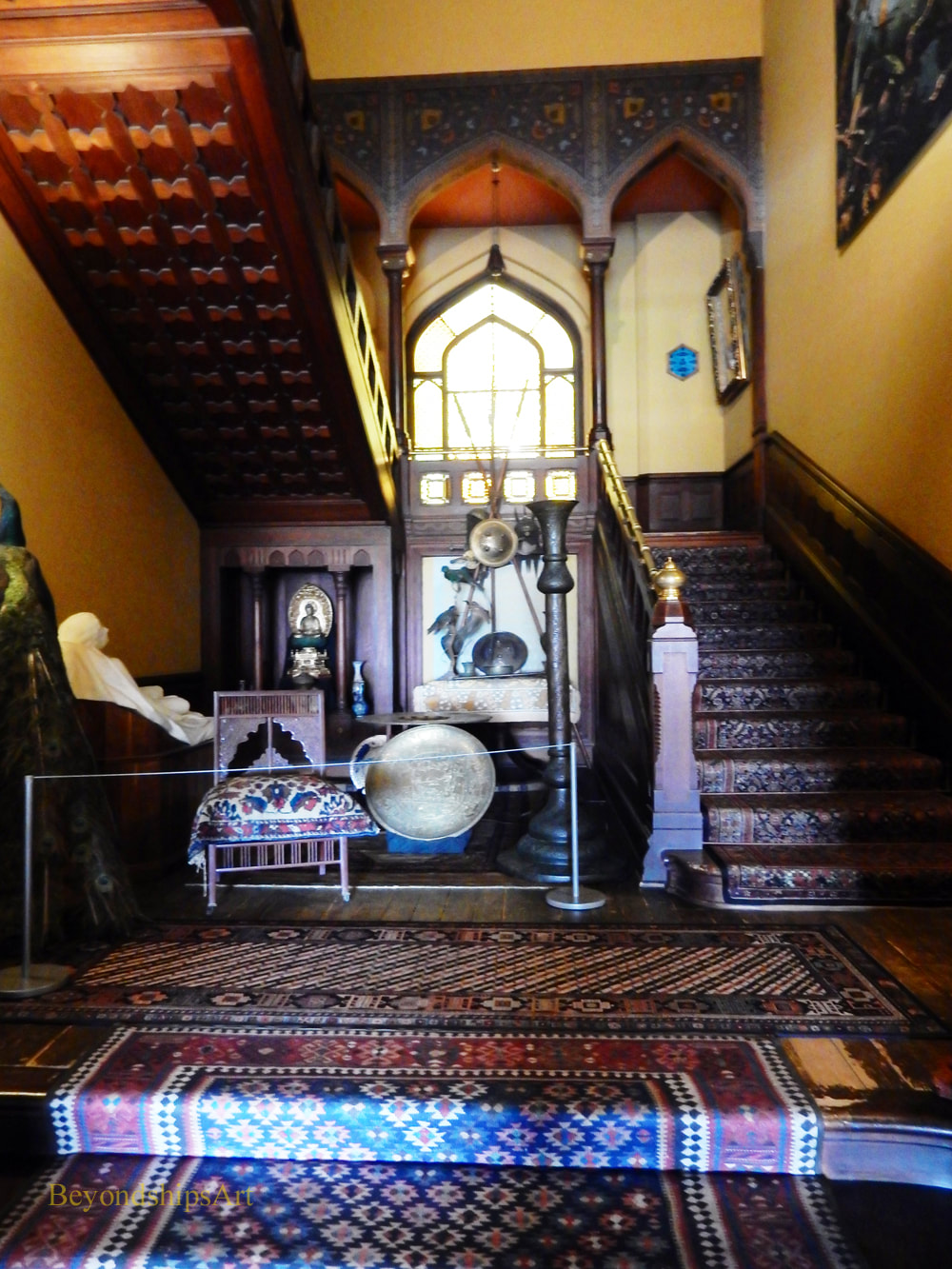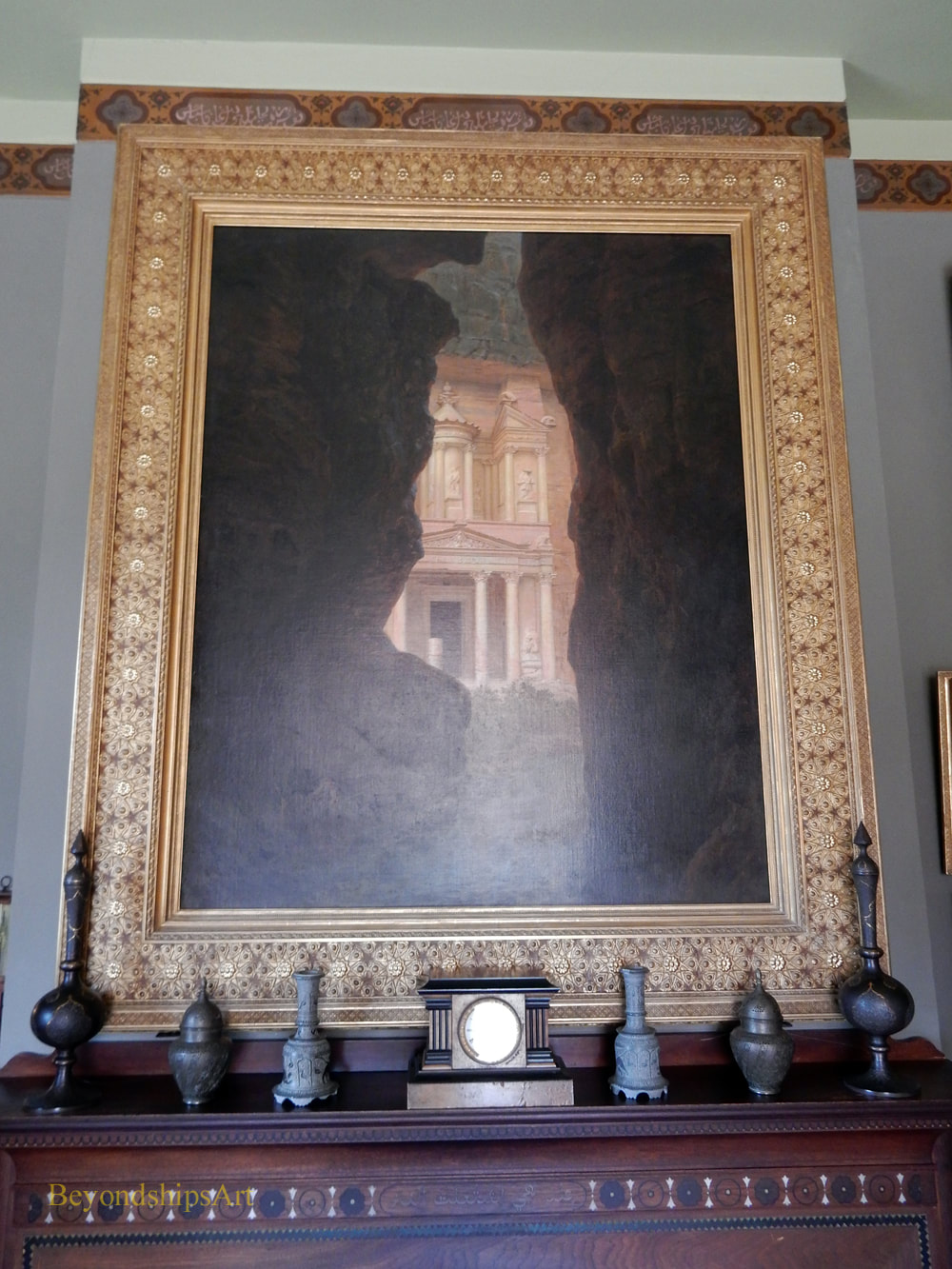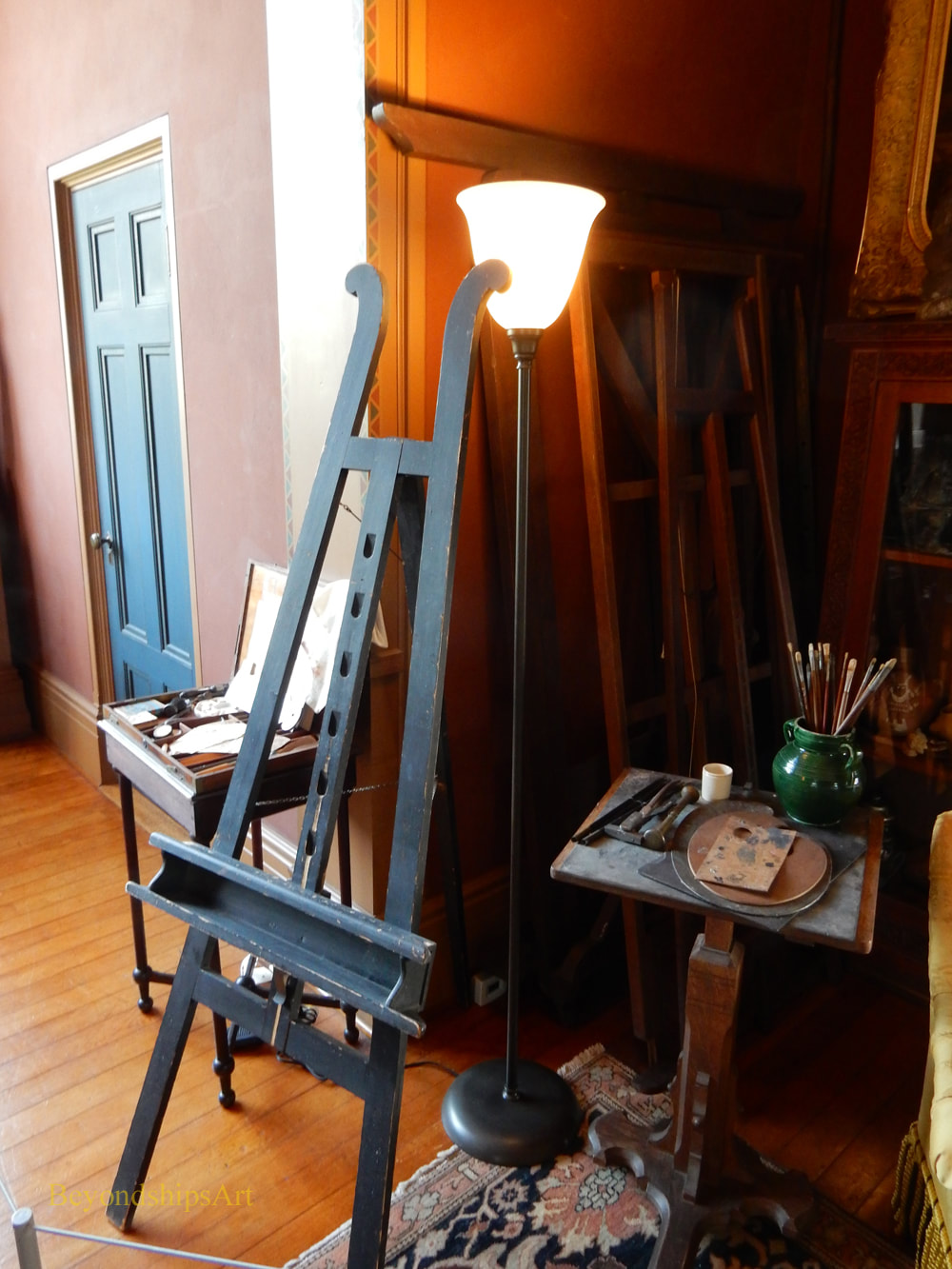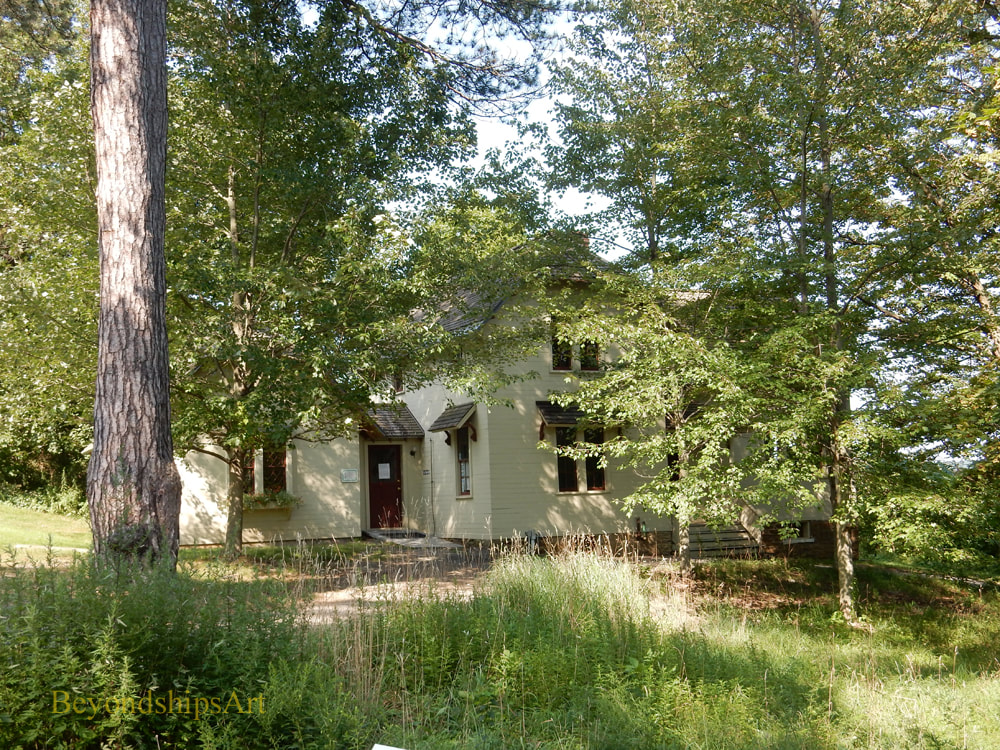|
Olana was the creation of 19th century American artist, Frederic E. Church. Located outside of Hudson, New York, it is a place of great scenic beauty. In addition, it contains important original art in a unique example of Victorian architecture.
The Olana Story Church first saw the area on which Olana is built when he was a pupil of Thomas Cole. The founder of the Hudson River School was by then America's most prominent artist and Church's father had arranged for his son to study under Cole. Cole lived across the river from the site that would become Olana in Catskill and he would often take his pupil with him on painting and sketching expeditions in the neighboring countryside. A few years later, Church, now an established artist in his own right, was planning on getting married and was looking for a place in the country for his family. He had never forgotten the hill overlooking the Hudson where he had gone with Cole and so he purchased a farm that occupied part of the site. Although the farm was 126 acres, Church envisioned a much larger estate. Therefore, with financial assistance from his wealthy father, Church began purchasing additional parcels of land. Eventually, Church's property grew to 250 acres. Employing prominent New York architect Richard Morris Hunt, Church built a house on the property, which Church and his wife Isabel named “Cozy Cottage.” In addition, Church converted a marshy area into a 10 acre lake, built barns, an ice house and a separate building as a studio. Church's practice was to to produce a sketch of a scene while at that location. He would then take the sketch to his studio where he would combine it with a number of other sketches and create a painting. To finish the painting, he would have the canvas transported to his studio in the Tenth Street Studio Building in Manhattan. Tragedy struck the Church family in 1865 when their young son and daughter died in a diphtheria epidemic. The grieving parents began to travel, first to Jamaica and then to Vermont. Travel became an important part of thir lives. By the late 1860s, the Churches had begun a new family and returned to Cozy Cottage. Not long thereafter, the adjoining parcel of land known as “Sienghenbergh” or “Long Hill” became available. This parcel included the highest point on the site and the best views. Church purchased the land. Church decided that he would build a new house on Long Hill. This would not be another country cottage but a gentleman's mansion. First, Church approached Richard Morris Hunt who proposed building a French-style chateau. However, Church had his won ideas and decided that he would “be his own architect” with architect Calvert Vaux, who had designed the buildings for New York's Central Park, providing structural advice. During their travels in Europe and the Middle East, the Churches had been impressed with Italian villas and with Arabic architecture. Accordingly, Church designed a house that combined Italinate and Middle Eastern elements. Of course, the cold Hudson Valley winters demanded making certain adjustments such as covering the interior courtyard. At the same time, Church was working on the grounds surrounding the house. Suffering from rheumatism, it was becoming increasingly difficult for Church to paint so he made “pictures” by adjusting the landscape. Farming and industry had resulted in the removal of most of the trees from the area. Therefore, Church planted and/or moved thousands of trees. He planted them so that they formed vistas including his lake, the Hudson, and/or the distant Catskill, Berkshire and Taconic mountains. In addition, Church planned roadways and paths so that the vistas would unfold as his family and visitors explored the estate. Visitors included celebrities such as author Mark Twain as well as the general public. Not all of the property was devoted to being a country gentleman's estate. Church also operated a working farm with orchards, crops and livestock. Indeed, for most of the time the Churches lived there, they referred to it as “The Farm.” In the 1880s, the Churches began referring to the house and the estate as “Olana.” No one is sure why they did so. However, for Christmas 1879, Isabel gave Frederic a book on Middle Eastern geography. In it was a story about an ancient Persian treasure house called “Olane.” It has been suggested that the name Olana may have been derived from Olane. The Churches continued to live at least part of each year at Olana for the rest of their lives. They filled the house with items that they collected during their travels and with artwork produced by Frederic, Cole and other contemporary artists. They also expanded the house, adding a studio for Frederic. Isabel Church died in 1899 and Frederic the next year. Olana was inherited by their son Louis and his wife Sally. After Sally's death, it passed to a nephew who planned to sell it to developers. However, a preservation campaign led by David C. Huntington led to its purchase in 1966 by New York State. Why visit Olana? Olana is not unidimensional. It has something to offer for those interested in art, architecture, history and nature. In addition to being the home of a leading 19th century American artist, Olana is a place to see art. It contains original works by Church, his mentor Thomas Cole and by other contemporary artists. In addition, some of the rooms of the house have been transformed into galleries where visiting exhibitions by other artists are on view. Olana is also of interest from an architectural perspective. It is a unique example of Victorian architecture combining elements of European and Middle Eastern architecture. Inasmuch as Church was not a professional architect, there are no other similar buildings. Indeed, it is somewhat reminiscent of Osbourne House in England, which too was largely designed by an amateur architect, Prince Albert. From a historical perspective, Olana is an example of a Gilded Age mansion, complete with furnishings and outbuildings. Like the “cottage” mansions in Newport, it provides a glimpse of upper class life during the period America was beginning to emerge as a player on the world scene. Even leaving aside art, architecture and history, Olana is worth visiting because of its setting. The views are magnificent. Church's trees are mature and form beautiful woodlands. As Church intended, the paths and roadways take visitors through a sequence of picturesque scenes. Olana is operated as a New York State Historical Site. For information about visiting, see the Olana website. |
Above: Church's gallery and dining room.
Below: The main staircase. Above: Church's painting of the ancient city of Petra.
Below: Chuch's easel and art supplies. Above: Cozy Cottage.
Below: Views from Olana. |
|
|
|
Places to see art - - New York State - - Olana
